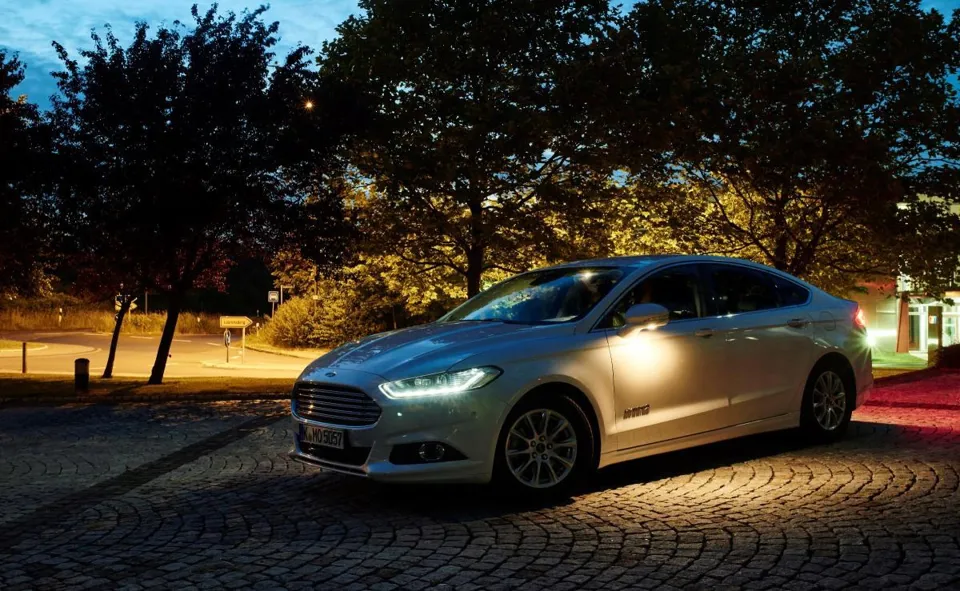Ford is developing new lighting technologies that will enable drivers to more easily identify potential hazards, including pedestrians, cyclists and animals.
Ford’s camera-based advanced front lighting system can widen the beam at junctions and roundabouts to better illuminate hazards that are not in the direction of travel.
New spot lighting technology helps draw the driver’s attention to pedestrians, cyclists and even large animals in the vehicle’s path or even just off the road, using an infra-red camera in the front grille to simultaneously locate and track up to eight people and bigger animals, including larger dogs, at a range of up to 120 metres.
The system can spotlight two hazards for the driver with a spot and a stripe on the road surface, illuminated by two special LED lamps next to the fog lights. The highlighted objects are displayed on the screen inside the car, marked in a red or yellow frame, according to the proximity of the object and the level of danger presented.
Vice president, Ford research and advanced engineering, Ken Washington, said: “Many people who drive at night have had to quickly react to someone or something suddenly appearing in the road – as if from nowhere. Ford’s camera-based advanced front lighting system and spot lighting help ensure the driver is quickly alerted to people or animals that could present a danger.”
The system also uses GPS information to better illuminate bends and dips on a chosen route. Where GPS information is not available the technology uses a forward-facing video camera mounted in the rear-view mirror base to detect lane markings and predict the road’s curvature, using the information to illuminate the area more effectively. Also in those instances, the camera stores the information in the navigation system. When next the driver uses the same road again, the headlights adapt to the course of the road automatically to better light the way.


















Login to comment
Comments
No comments have been made yet.